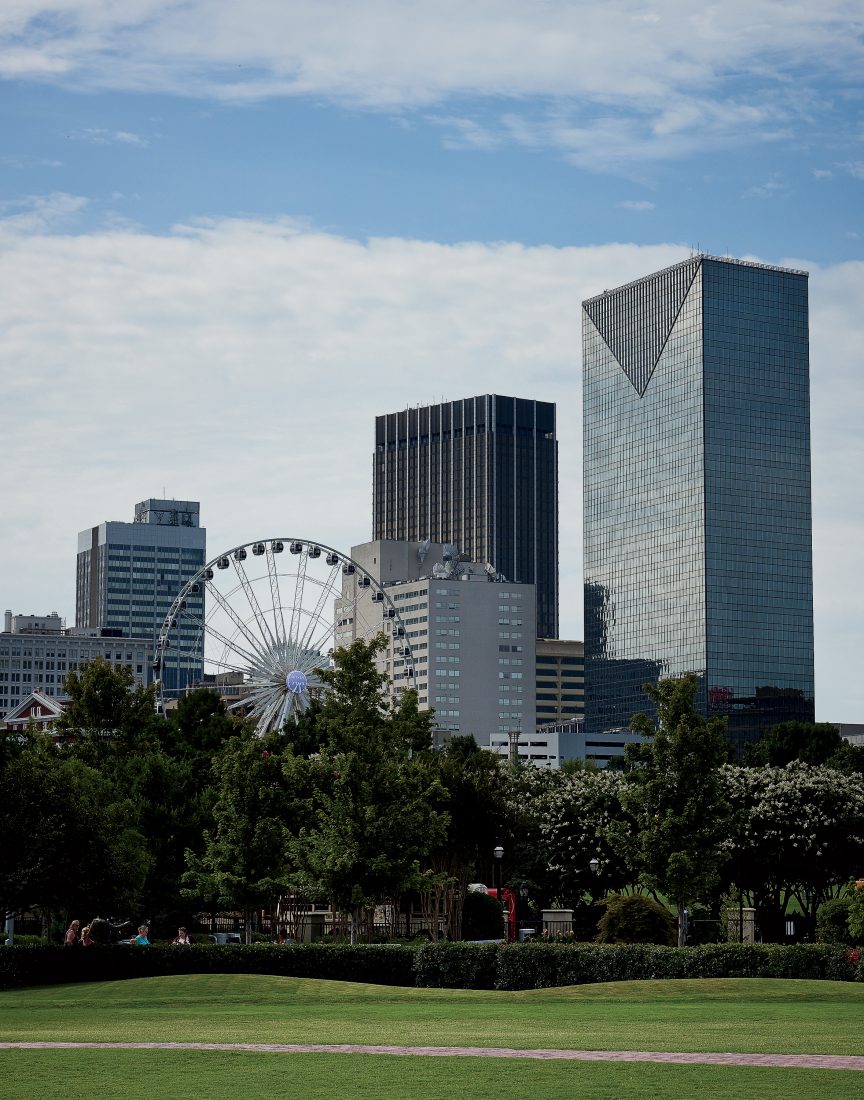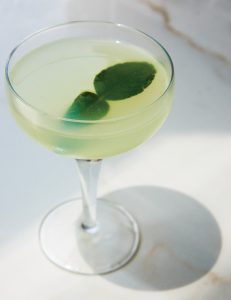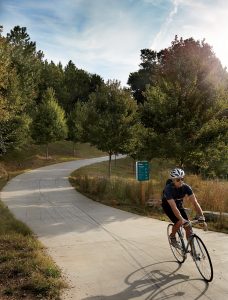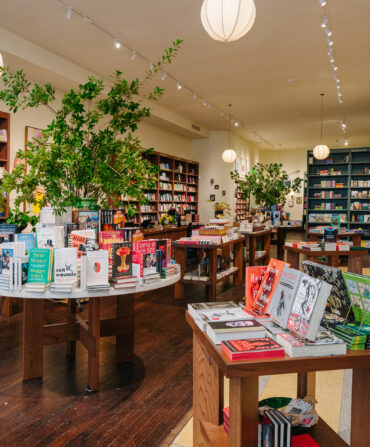City Portrait
City Portrait: Atlanta, Georgia
The Georgia capital is shaking off a reputation for mass-market sameness and finally embracing its quirks

Photo: Greg Dupree
>View more photos from the story
The city of Atlanta has long suffered from being stuffed into that most empty and meaningless of pigeonholes: the New South. To be fair, Atlanta often crammed itself into that hole. (Never more so than during the opening ceremonies of the 1996 Summer Olympics, when monster trucks and cheerleaders were chosen to represent said newness, but really only made us look mortifyingly silly, like a crop top on a granny.)
The reasoning itself wasn’t inherently unsound. Atlanta and those inclined to defend it were striving to differentiate the region from the less savory of the Southern traditions and those anachronistic towns that stubbornly clung to the past like a tatty cultural life preserver.
Atlanta—whose municipal symbol, after all, is the phoenix—has always marketed itself as the South of big industry, of progress, Hotlanta, a restless city planning for an optimistic future far removed from Tara and its long shadows, a place “too busy to hate,” with shiny architecture and business titans and Coca-Cola, free of cutesy kitsch and corn pone and also, for some time, personality.
When I first moved here, in the mid-1990s, Atlanta was at the height of its New South drag. Problem was, the modern iteration of “New South” meant nothing. As such, it became a tool of dismissal.

Photo: Greg Dupree
Inside the Center for Civil and Human Rights.
“Atlanta?” people outside the region would repeat with thick disdain when I revealed where I lived, incredulously spitting the word as one might say “Cleveland,” or “bedbugs.”
“Why there?”
Fair enough. Atlanta then was willfully subverting its uniqueness in favor of Mall of America blandness. A necklace of aspirational suburbs strung together by a knotted cord of highways aiming to join all those other anonymous cities with nothing distinctive to offer. (Hammering the point, the irreverent local artist R. Land began making faux postcards that read, GREETINGS FROM ATLANTA, NO PLACE LIKE IT! featuring snapshots of Best Buy, PetSmart, Target, etc.) The constant march toward the bromidic made Atlanta look insecure. And as anyone above the age of seven can attest, nobody is attracted to insecurity.
I moved away. And then, over the past decade or two, a funny thing happened. Like a lab experiment gone rogue, Atlanta began to evolve all on its own, without the aid of goofy civic labels or sketchy corporate boosterism. The cringe-worthy striving faded. The city grew up. (And two years ago, I moved back.)
At heart, it’s a small town trapped in a big city’s skeleton, and it has finally begun to treasure its quirk and randomness, to view its distinctive neighborhoods as assets rather than rebel children to be shaken into line. It’s as if Atlanta has stopped trying to join the popular frat and at long last embraced its inner theater geek.

Photo: Greg Dupree
Cooks & Soldiers’ Hornbuckle cocktail, made with tequila, lemon, and coconut water.
A magnet for Southerners who either didn’t fit into their small towns, or just craved the brighter lights of a bigger city but weren’t interested in abandoning the South, Atlanta has doubled down on its openness and revealed itself to be one of the most tolerant cities in the country. By continuing its tradition of civil rights activism (John Lewis still marches here) and celebrating diversity of all sorts—racial, sexual, gender, economic, and regional—Atlanta has quietly gone about the business of not only opting to be on the right side of history, but also becoming genuinely cool.
Absent now is the breathless, eager-beaver-please-love-me pitch, replaced by a confident, relaxed vibe that is palpable the minute you land at Hartsfield-Jackson Atlanta International. Unlike most airports, when you arrive in the ATL, you are immersed in a cocoon of happy chatter, folks in generally positive spirits, people who seem at base, pleased to be home. Even the TSA employees in Atlanta are friendly. They joke and tease and smile. This is not the case at Newark.
That geniality persists no matter where you go. Pumping up your tires at a gas station on Moreland Avenue, the attendant asks about your day. Ordering lunch in Midtown, you bond with the couple in the booth behind yours over the humidity. Picking through produce at the grocery, no fewer than five strangers sing along with the Otis Redding tune playing. Yes, there is traffic. But you won’t wait more than a minute to be let into the lane.
What sets Atlanta’s warmth apart from traditional “Southern hospitality” is the aforementioned bigheartedness, an unleashing that frees everyone up to express and inhabit themselves. Go to breakfast at Ria’s Bluebird, or the Flying Biscuit Cafe, or Home Grown on any given day and you’ll find yourself dining with construction workers, rap stars, moms in gym clothes, cops, art students, drag queens, and tourists who get suggestions from all of the above regarding what to do with the rest of their day. Atlanta seems to have at last recognized that its most desirable asset isn’t productivity, but inclusion.
As with any coveted gumbo, the thick mix is the thing. There are in-town neighborhoods like Inman Park, East Atlanta, the Old Fourth Ward, Candler Park, and many others that are defined by energy and attitude, not a box you would check on a government form. The net is a thriving, dynamic city that feels both progressive and fun.
Atlanta’s new attitude has attracted not only a welcome influx of young professionals but a whole new creative class, much of it tied to the film and television industry, which dubs Atlanta “Y’allywood,” a title we hardly mind because of the dollars it floods into our city. (Per the Georgia Department of Economic Development, $5.1 billion in 2014.) More to the point, the actors, directors, photographers, models, set designers, and crew who set up camp in the city leave with nothing but sweet things to say, smitten and charmed and longing to return.

Photo: Greg Dupree
Mixing It Up
Kimball House bartender Miles Macquarrie.
There are more parks in this city than you can visit in a month. We boast a restaurant scene to rival that of Los Angeles. Ditto for music. The same multicultural energy that powers Atlanta’s mojo infuses all it touches—art, festivals, fashion, even cocktail bars. All intermingle.
Restaurateur Hugh Acheson goes to punk shows at the Earl. Poet laureate Natasha Trethewey enjoys a drink on the divey rooftop deck of Six Feet Under, overlooking historic Oakland Cemetery, with “its obelisks and weeping angels cast in stone, perfectly Southern gothic!” Singer-songwriter Amy Ray savors hot tea at Java Monkey in Decatur. Chef Steven Satterfield takes in the art at Whitespace, an edgy gallery located in a tree-filled courtyard. Everyone eats, drinks, and hangs at Krog Street and Ponce City Markets, recently rehabilitated industrial spaces that attract residents and visitors to previously blighted areas and prove definitively if you build it (and serve mind-blowing pork barbecue and potent margaritas), they will come.

Photo: Greg Dupree
Biking the BeltLine.
And then there is the BeltLine, a redevelopment of trails and paths along an abandoned railroad corridor, parts of which are lined with cafés, bike rental shops, a skate park, art exhibitions, and athletic fields. The twenty-two-mile project will circle downtown and connect once-remote neighborhoods directly to each other, liberating Atlantans from their cars and showing doubters that this can be, contrary to public perception, a walking city.
The BeltLine—forward thinking, beautiful, accessible, busy but never too crowded—shows what Atlanta has become, and what it can continue to be. It is a literal cross section of our city, and when you walk its paths, winding through neighborhood after neighborhood, passing neighbor after neighbor, you feel a sense of welcome, of hope, of belonging, of playfulness, of unity. You feel like you are in the South. And yet, you feel like you are someplace new.
Well played, Atlanta. Well played.







